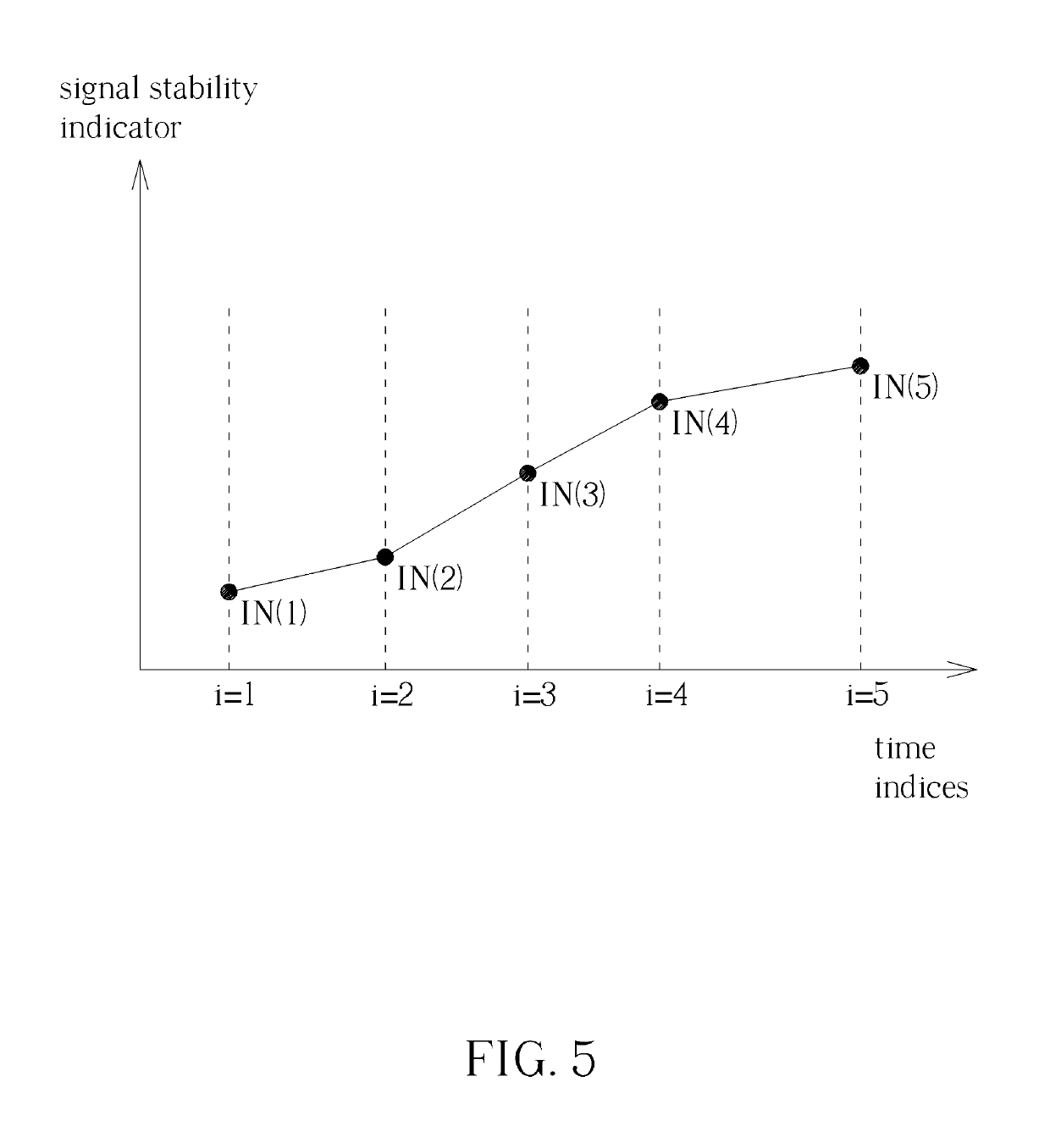Method for determining stability of a wireless signal and system thereof
a wireless signal and stability technology, applied in the field of wireless signal stability determination, can solve the problems of unstable wireless link between two different devices, high power consumption, and often suffers of wireless channels, and achieve the effect of revealing the stability of wireless signals
- Summary
- Abstract
- Description
- Claims
- Application Information
AI Technical Summary
Benefits of technology
Problems solved by technology
Method used
Image
Examples
Embodiment Construction
[0015]FIG. 1 is an illustration of a system 100 for determining stability of a wireless signal according to an embodiment of the present invention. The system 100 can be a point-to-point based wireless communications system, or a server-based wireless communications system. Generally, any two different transceivers capable of establishing a wireless link and communicating data belong to the system 100 of the present invention. The system 100 includes a first transceiver 10 and a second transceiver 11. The first transceiver 10 can be any device capable of transceiving a wireless signal, such as a smartphone, notebook, or tablet. The second transceiver 11 can be any device capable of transceiving the wireless signal, such as a smartphone, notebook, or tablet. A wireless link L can be established between the first transceiver 10 and the second transceiver 11. Further, after the wireless link L is established, bi-directional data communications between the first transceiver 10 and the s...
PUM
 Login to View More
Login to View More Abstract
Description
Claims
Application Information
 Login to View More
Login to View More - R&D
- Intellectual Property
- Life Sciences
- Materials
- Tech Scout
- Unparalleled Data Quality
- Higher Quality Content
- 60% Fewer Hallucinations
Browse by: Latest US Patents, China's latest patents, Technical Efficacy Thesaurus, Application Domain, Technology Topic, Popular Technical Reports.
© 2025 PatSnap. All rights reserved.Legal|Privacy policy|Modern Slavery Act Transparency Statement|Sitemap|About US| Contact US: help@patsnap.com



